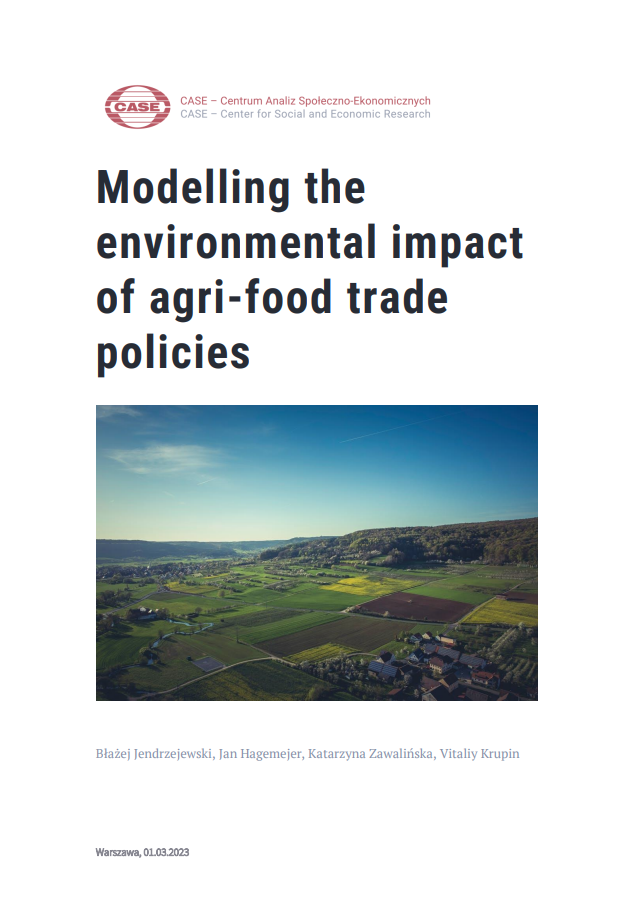 Homepage CASE
Homepage CASE
Selected values

Modelling the environmental impact of agri-food trade policies
-

Jan Hagemejer
Macroeconomics and Trade Director
Jan Hagemejer’s areas of expertise are international trade as well as macroeconomic and structural issues. He graduated from University of Warsaw where he also obtained his PhD and habilitation, as well as from Purdue University (MA in Economics). He works as an associate professor at the Faculty of Economic Sciences, University of Warsaw. Prior to … <a href="https://case.dev10.pro/publications/modelling-the-environmental-impact-of-agri-food-trade-policies/">Continued</a>
Articles from this author:
-
The Impact of Tobacco Product Production on the Polish Economy. 2024 Edition
The document continues research from 2018 and 2020, focusing on the role of the tobacco sector in the Polish economy. The report discusses, among other things, the structure of the industry, its impact on the labor market, contribution to GDP, investments, as well as challenges and future development prospects. It also includes a detailed analysis of the market for innovative products and the taxation of tobacco products, comparing the Polish system with other EU countries. Key conclusions of the report include: In 2023, Poland produced 214.8 billion cigarettes, an increase of 42% compared to 2013, and the total production of tobacco products rose by 70%. Poland is the largest producer of tobacco products in the European Union, with a 39% share of the EU market. In 2023, the market value of traditional tobacco products was 42.9 billion złotys, with cigarettes accounting for the largest share (40.2 billion zł). Tobacco product exports make up 85% of production, and Poland is the main supplier of cigarettes to Germany, Spain, and Italy. Changes in the market for innovative products led to more than an eightfold increase in their sales from 2019 to 2023, reaching an 11.5% market share in 2023. Changes in the taxation structure of tobacco products, such as planned excise tax increases between 2025 and 2027, may affect demand and government revenue. The report also highlights the growing impact of excise and VAT taxes on the state budget and the positive effects of stable excise policies, as seen in Germany and Romania. However, changes in EU legislation and the phenomenon of the grey market remain challenges. In the long term, maintaining investments and promoting innovation could bring further economic benefits to Poland, while increased tax burdens may hinder sector growth.
-
Transatlantic Subnational Innovation Competitiveness Index 2.0
For policymakers to bolster the global competitiveness of their nations and regions, they first must know where they stand. This report benchmarks the 121 regions of Austria, Germany, Hungary, Italy, Poland, Sweden, and the United States using 13 commonly available indicators of strength in the knowledge economy, globalization, and innovation capacity.
-
Global value chains: Potential synergies between external trade policy and internal economic initiatives to address the strategic dependencies of the EU
Global value chains enable two-thirds of international trade, notably for the EU. The EU wants to preserve its commercial links with third countries and organisations to make up for trade disruptions. This study examines sustainable supply of raw materials, commodities, and critical goods using the EU’s Open Strategic Autonomy concept. It examines which raw material … Continued
-
The Impact of Tobacco Product Production on the Polish Economy. 2024 Edition
Related publications
Thanks for joining us!
You're now part of a community that values [your newsletter's focus]. Get ready to stay informed, inspired, and engaged with our carefully curated content.
